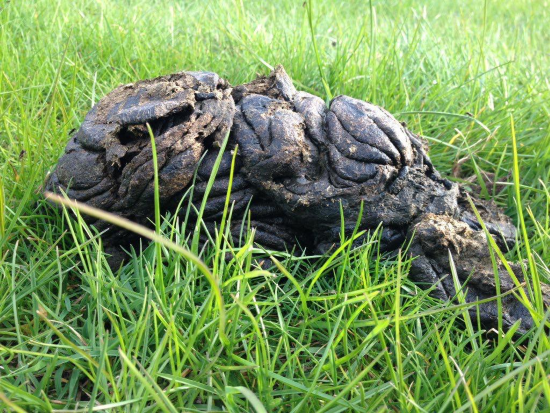What do you find in dung pats?
Each dung pat is a micro-habitat, and you will find plenty of other things living in or on them. ‘Insects of the British cow-dung community’ by Peter Skidmore, is a comprehensive account of the types of invertebrates that can be found in cattle dung.
A simple rule of thumb is if it is fast moving it is not a dung beetle, but more likely a predatory insect like water scavenger beetles (Hydrophilidae). These predatory beetles need to be quick to hunt for food.
Hydrophilidae
Hydrophilidae are very active in dung and easily mistaken for dung beetles. The adults will consume dung and their larvae predate other insects, fly eggs and maggots.
Rove beetles
Rove beetles are also common in dung, again a predator and fast moving. They are not doing the same ecosystem services as dung beetles but instead are hunting other insects.
Histeridae (Clown beetles)
Another predatory beetle that lives in dug. Like dung beetles it will pretend to be dead when unearthed, what tells them apart is a rounder shape.
Yellow dung flies
You will also likely see yellow dung flies. They breed in dung and the adults mainly prey on smaller insects particularly other species of flies.
Phoretic mites
Phoretic mites, pinkish white mites, travel on dung beetles and are transported when the beetles fly to new dung pats. They move pat to pat with the dung beetles looking for fly eggs to consume. It is a symbiotic relationship as the mites reduce maggots that consume dung so leaving more for the beetles.
Earthworms
It is well understood how important earthworms are to soil structure and health. Having dung pats that are active with dung beetles actually increases the presence of all three types of earthworm underneath the pats. Think of the dung beetles and earthworms working in conjunction moving all that dung and soil around underground; recycling all those nutrients.
Other insects of the dung community
Within the dung pat other invertebrates can be found, during the different stages of dung decomposition, alongside the ones mentioned above. These invertebrates also help break down the pats and form an important part of biodiversity, being food for several species of birds, bats and other mammals:
- Nematodes
- Slugs
- Woodlice
- Centipedes
- Millipedes
- Springtails
- Fly larva
- Beetle larva
- Harvestmen
- Spiders
- Mites
- Earwigs
- Parasitic wasps
Dung pats also form homes for a range of fungi.

